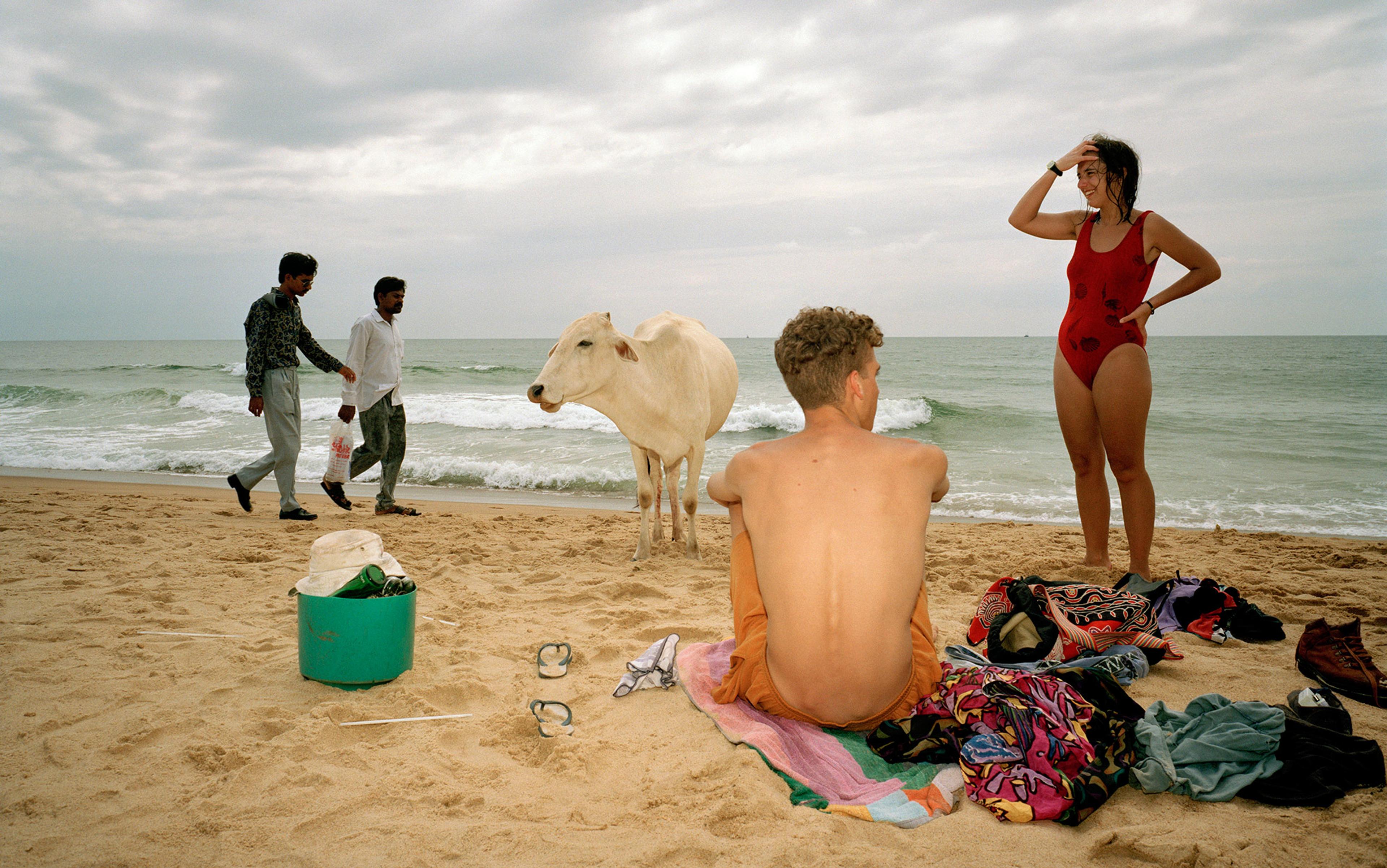‘Know thyself’ is one of philosophy’s most ancient aphorisms. But is there such a thing as the self and, if there is, can it be empirically investigated through scientific methods? Antirealists deny the existence of the self – for them it is an illusion, a fiction of the mind. If there was no one to perceive it, there would not be a self. The concept of the self, in their telling, is invented by cultural, social and linguistic conventions. It is nothing but a useful conceptual tool for organising human experience.
David Hume, the 18th-century Scottish philosopher and economist, remains the preeminent antirealist. He suggests that we have no experience of a simple, individual impression that we can call the self – where the ‘self’ is the totality of a person’s conscious life. In A Treatise of Human Nature (1740), Hume wrote:
When I enter most intimately into what I call myself, I always stumble on some particular perception or other, of heat or cold, light or shade, love or hatred, pain or pleasure. I never can catch myself at any time without a perception, and never can observe anything but the perception.
Today, Daniel Dennett, a philosopher of mind and cognitive scientist at Tufts University in Massachusetts, also defends the antirealist view. For Dennett, each ‘normal’ individual of the species Homo sapiens creates a self by spinning stories about herself in the process of presenting herself to others through language. The tendency to create selves by way of creating stories, for humans, is akin to how spiders weave webs to protect themselves: it is both intrinsic and unconscious, argued Dennett in Consciousness Explained (1991). Because the self is constructed and abstracted out of narratives, it is permeable and flexible, and because of its permeability and flexibility, the self eludes scientific scrutiny.
The antirealists also argue that the phenomenal experience of the self requires ‘privileged access’, whereby the subject is a witness to her own mental states, and these mental states are not intersubjectively validated. For instance, how a teenager conceives of her body (say, as overweight) is given directly only to her, not to others. Perhaps she falsely represents herself to herself as overweight, due to cultural influences on her conception of what the ideal weight is. The self, then, according to the philosopher David Jopling at York University in Ontario, is experienced in ways that are intimately interlaced into the fabric of culture and language, so variations in culture and language will lead to different experiences of the self, making the self a non-stable, moving target, escaping scientific enquiry.
Or take individuals with schizophrenia, some of whom report a deep sense of disintegration between themselves and their actions. They feel that they are automatons, not agents who see, feel, eat, suffer – their bodies can feel to them like alien objects. Meanwhile, phenomenologically typical individuals are immediately aware that they are the subject of their feelings or actions, as they are simultaneously aware of said feelings. For them, the self is the ‘unarticulated constituent’ of experience, in the words of the philosopher John Perry of Stanford University in California. If science aims to come up with generalisable explanations and predictions of human behaviour, how can it empirically track a self that appears to be intrinsically flexible, private, subjective and accessible only to the subject whose self is in question?
The answer is that science does all this by rejecting antirealism. In fact, the self does exist. The phenomenal experience of having a self, the feelings of pain and of pleasure, of control, intentionality and agency, of self-governance, of acting according to one’s beliefs and desires, the sense of engaging with the physical world and the social world – all this offers evidence of the existence of the self. Furthermore, empirical research in the mind sciences provides robust reasons to deny antirealism. The self lends itself to scientific explanations and generalisations, and such scientific information can be used to understand disorders of the self, such as depression and schizophrenia, and to develop this self-understanding facilitates one’s ability to live a rich moral life.
I call my proposed model the ‘multitudinous self’. ‘Do I contradict myself?’ asks the poet Walt Whitman in ‘Song of Myself’ (1891-92), ‘Very well then I contradict myself, / (I am large, I contain multitudes.)’ The multitudinous self is empirically tractable and responsive to the experiences of ‘real people’ who do or do not have mental disorders. According to this model, the self is a dynamic, complex, relational and multi-aspectual mechanism of capacities, processes, states and traits that support a degree of agency. The multitudinous self has five distinct but functionally complementary dimensions: ecological, intersubjective, conceptual, private, and temporally extended. These dimensions work together to connect the individual to her body, her social world, her psychological world, and her environment.
The multitudinous self is based on the psychologist Ulric Neisser’s account of the self, laid out in his paper ‘Five Kinds of Self-knowledge’ (1988). Neisser encourages us to reevaluate the sources of information that help us to identify the self. There are five sources, which are so different from one another that it is plausible to conceive each as establishing a different ‘self’. First there is the ecological self, or the embodied self in the physical world, which perceives and interacts with the physical environment; the interpersonal self, or the self embedded in the social world, which constitutes and is constituted by intersubjective relationships with others; the temporally extended self, or the self in time, which is grounded in memories of the past and anticipation of the future; the private self which is exposed to experiences available only to the first person and not to others; and finally the conceptual self, which (accurately or falsely) represents the self to the self by drawing on the properties or characteristics of not only the person but also the social and cultural context to which she belongs.
The multitudinous self is a variation of the Neisserian self in that it individuates the self as a complex mechanism with many dimensions that interact and work together to maintain a more or less stable agency over time. At times these different dimensions of the self contradict each other (very well then). Interpersonally, I might come across as gregarious, and present an image of a someone who enjoys companionship, yet my private sense of self might be that I am shy and introverted. Because these five dimensions are all more or less integrated, however, they help with self-regulation, and function as a locus of experience and agency. The multitudinous self gives a partial but helpful representation of the selves we encounter in our daily lives. It is also scientifically scrutable.
To see how this is so, take the following example. We can acquire information about the selfhood of 12-year-olds, tracking information about them in all five dimensions by relying on both first-person and third-person perspectives. First, we could interview them on how the physical changes in their bodies are manifested in their ecological dimension: how the changes in their height or weight affect their physical activity, or how such physical changes affect their interpersonal dimension through their effects on the nature and quality of their interpersonal relationships.
A girl’s weight might be typical for her height, sex and age, but not seem so to herself
Similarly, we can acquire information on how the physiological changes are manifested in the temporal, private and conceptual aspects of themselves. For instance, through first-person reports, we can evaluate whether and what kind of short-term memory loss the preteen might be experiencing, and whether it affects his sense of the future. This would yield information about the temporal dimension of the preteen self. Or we might learn about the private aspect of the self by interviewing them about ‘what it is like’ to be 12.
Finally, to develop a robust understanding of how their self-concepts are evolving in response to the changes they are undergoing, we might ask them how they represent themselves to themselves. Some might be changing their physical self-concepts – they might consider themselves tall after a radical growth spurt, or might think of themselves as overweight. Note that these alterations in self-concepts are not necessarily accurate or truth-tracking: a girl’s (or boy’s) weight might be considered in a typical range for her height, sex and age, but not seem so to herself.
The self of the preteen is also empirically tractable from a third-person perspective through sciences of the mind, including cognitive psychology, social psychology, clinical psychology, psychiatry, neuroscience and genetics. Through physiology and biology, we can determine the statistically typical range of changes in preteens’ bodies for their sex- and age-groups. We can evaluate the changes in their interpersonal dimensions, such as increased conflict with parents, by referring to research in developmental psychology, neuropsychology and social psychology. Similarly, we can acquire information about short-term memory loss and how it shapes temporality. Changes in the private dimension of the self can be at least partially tracked by analysing how behaviour changes. And alterations in the preteens’ conceptual dimension can be tracked through psychology and anthropology. For example, children in the United States tend to experience a decline in their positive self-concepts during their adolescent years; this decline often begins around age 12 for girls. Based on these first- and third-person perspectives, then, we can indeed draw reliable inferences about preteen selves.
Recall that the antirealists argue that the self is flexible, private, subjective and accessible only to the subject, which precludes the self from being the subject of sciences. The multitudinous-self model is responsive to this challenge as well. The flexibility, subjectivity and transiency of the self that antirealists have in mind are the features of the private and conceptual dimensions of the self – but this is not the whole complex mechanism of the self; there are other dimensions. The ecological dimension of the self (the body) is more or less stable and intersubjectively certifiable, readily lending itself to scientific scrutiny. The interpersonal dimension of the self can also be scrutinised by science; we can track a person’s family, relationships and socio-economic status through scientific research. So the temporal dimension of the self is also amenable to scientific investigation; whether a person has experienced a significant loss during childhood or whether his experience of trauma has affected his actions and self-related feelings can both be studied. The subjective and transient aspects of the self that antirealists delineate are actually the private and conceptual dimensions of the self. Recall the above example of people with schizophrenia: their private experiences of themselves reveal a disintegration of the sense of self; they feel as though they are the objects, not the subjects of their actions. In contrast, a person with a standard phenomenology might have a more robust and integrated sense of agency.
While antirealists are right to note the variability in self-concepts and private experiences of the self, this doesn’t mean that there aren’t regularities within the variability. We might, for instance, be able to find similarities in the private aspect of the self among those with schizophrenia, and use them to further our understanding of the illness, with the goal of helping those suffering from this condition. Similarly, the variability in self-concepts (eg, preteens and body-image issues) is an indication that self-concepts emerge from the interaction between the different dimensions of the self and the social and cultural world within which the person is situated. Scientists might find that those with supportive and positive interpersonal relationships, say, are less likely to develop negative self-concepts about their bodies.
Realism is mostly popular among psychologists and empirically informed philosophers of mind, such as William James in the late 19th century and, more recently, the aforementioned Jopling, as well as Owen Flanagan at Duke University in North Carolina and George Graham at Georgia State University. The reason for the realist commitment appears to be pragmatic. The reality of the self matters. The concept can be employed and manipulated in making sense of the complex human psyche, and successfully edifying enough so that the self is open to the enrichment of moral possibilities. For instance, in The Principles of Psychology (1890), James argued that a person’s self is
the sum total of all that he CAN call his, not only his body and his psychic powers, but his clothes and his house, his wife and children, his ancestors and friends, his reputation and works, his lands and horses, and yacht and bank-account. All these things give him the same emotions. If they wax and prosper, he feels triumphant; if they dwindle and die away, he feels cast down.
James’s postulation of the self not only tracks what the ordinary people whom we encounter in our daily lives are like, but is also helpful, for instance, to a clinician aiding a grieving patient, by helping that person to find ways of coping with loss.
The multitudinous-self model takes this pragmatism a step further: it is designed as a useful conceptual and empirical tool to expand scientific knowledge on mental disorders. Mental disorders do not influence or change exclusively one dimension of the individual – their interpersonal relationships, say – but multiple aspects of their lives simultaneously. Studying only one fractured aspect of their self (eg, autobiographical memory) will not yield the rich results that will come from engaging with the self in its complexity.
An integrated understanding of the different parts of the self is necessary to fathom the complexity of mental disorders
Take addiction. The addict has a physical dependency that prevents him from living a fulfilling life, but that is not where the story of addiction ends. The quality of an individual’s social relationships diminishes; he loses self-respect because his performance in his job declines; his self-concepts dramatically change as he now considers himself to be unreliable as opposed to trustworthy, and so on.
Because the multitudinous-self model tracks all the different dimensions of selfhood, it offers rich scientific resources to investigate and intervene on different aspects of mental disorders. It encourages the development of research programmes not only in neuroscience and genetics but also disciplines that study the role of interpersonal relationships, environment, culture and the epidemiological factors in the development of illness. While a fractured engagement with different parts of the self is important, there is virtue in maintaining the self as a research construct in its full complexity, because what happens in one component of the self affects the self as a whole. An integrated understanding of the different parts of the self is necessary to fathom the complexity of mental disorders.
The subjective and private dimensions that antirealists take to be obstacles to scientifically investigating the self do not pose a problem for the complex multilayered mechanism that I call the multitudinous self. And the variability in the private and the conceptual dimensions of the self can track some regularities and yield important information about, say, psychopathology, or how different social and cultural environments might create certain kinds of self-experiences and self-concepts.
The multitudinous self mediates scientific explanations of the complexity of real people with and without mental disorders. It also provides resources for enhancing the moral agency that permits people to flourish. For me, flourishing is simply the development of a person’s psychological and social skills in engagement with herself and with others, in the face of the challenges triggered by her physical, social and psychological environment. If we know the characteristics of the self, we might be able to improve the lives of those whose self-experiences are not conducive to flourishing. The self is not an idle concept, either scientifically or ethically; it organises human experience and proliferates moral possibilities. So, yes, know thyself. Every single part.






